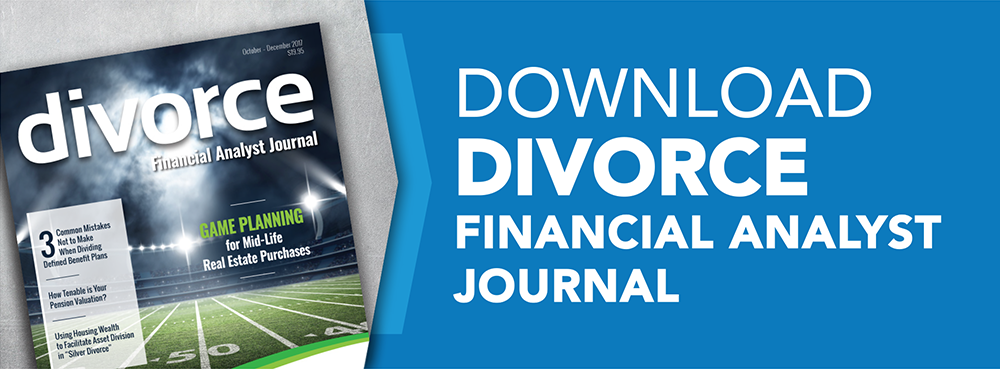Module Two: Divorce Financial Issues
Content Outline
Chapter 1: Property
- What constitutes “property” in a divorce.
- The difference between separate (excluded) and marital property.
- The definition of “matrimonial home” and how it is treated
- How to inventory the assets and uncover hidden assets.
- The value of career assets.
- How property is valued and how to allocate the value between the spouses.
- Options for dividing marital property and debt.
- The options for valuing and dividing a family business.
- The difference between “equal” and “equitable” property division.
- The tax consequences of property division.
Chapter 2: The Matrimonial Home
- The difference between a “matrimonial home” and a “principal residence”.
- The options for the matrimonial home, including: selling the home; having one spouse buy out the other spouse’s interest; or both spouses continuing to own the home.
- The financial viability of one spouse keeping the residence.
Chapter 3: Pension and Retirement Plans
- The importance of proper pension valuation.
- The difference between “Defined Benefit” and “Defined Contribution” plans and valuation methods.
- The difference between Federally and Provincially regulated pensions.
- The terms “Locked In”, “Survivor Benefits”, “If and When” agreements, and “Double-Dipping” as they relate to divorce.
- How Matrimonial Property Acts affect Pension Legislation.
- The different treatment of legally-married vs. common-law partners when it comes to pension division.
- The treatment of CPP, OAS, RRSPs, RRIFs, and DPSPs on divorce.
Chapter 4: Spousal Support
- The criteria for paying or receiving spousal support.
- How the length of the marriage and the lifestyle enjoyed during the marriage can affect spousal support.
- Under what circumstances spousal support can be changed.
- Tax issues surrounding spousal support.
- How to ensure that spousal support will be paid.
Chapter 5: Child Support
- How the Child Support Guidelines work.
- How custody arrangements affect child support: the differences between Shared, Split, and Sole Custody.
- Under what circumstances child support can deviate from the Guidelines.
- Tax issues surrounding child support.
Chapter 6: Divorce-Related Tax Issues
- Child support, spousal support, and compensatory support.
- Lump sums, arrears, and third-party payments.
- Transfers of property, including the matrimonial home, RRSPs, and RRIFs.
- Legal fees and capital gains exemptions.
- Corporate tax issues.
- Personal taxes and deductions.
Chapter 7: Divorce-Related Tax Preparation and Planning
- The importance of marital status.
- Reporting Income and what are support payments.
- ax Deductions:
- Child Care Expenses
- Support Payments made
- Legal costs paid
- Federal Non-Refundable Tax Credits.
- Federal Refundable Tax Credits
- Income Tax Planning and Federal Child and Family Benefits.
Chapter 8: Insurance and Estate Planning
- How to protect child support income in the event of the payor spouse’s illness, injury, or death
- The different roles that life, disability, critical illness, and property (home) insurance play in divorce
- Limitations regarding life insurance policies not owned by the beneficiary, and suggestions on ownership
- Estate Planning and the use of:
- Wills
- Powers of Attorney
- Testamentary Insurance Trusts
Chapter 9: Debt, Credit and Bankruptcy
- Who is responsible for any debts incurred during the marriage.
- The difference between secured debt and unsecured debt.
- How tax debt is handled in divorce.
- The issues posed by joint credit cards and the need to establish credit history.
- Bankruptcy and divorce: which debts are dischargeable, which are not.
Chapter 10: Sample Test Questions
- One hundred Sample Test Questions and Answers designed to show you how well you have learned and understood the material covered in this Module.
Register for the divorce financial issues and planning course.
For an overview of Module Three, click here.

 800.875.1760
800.875.1760







